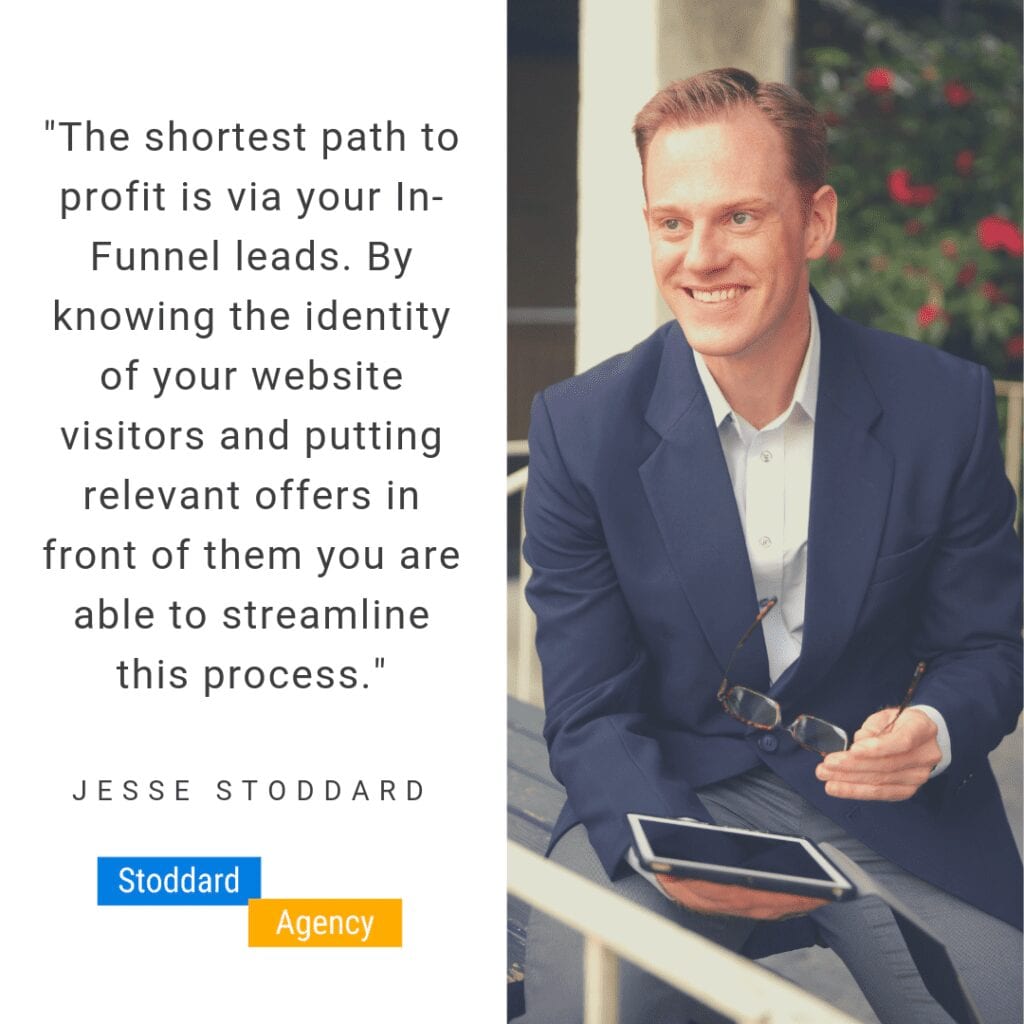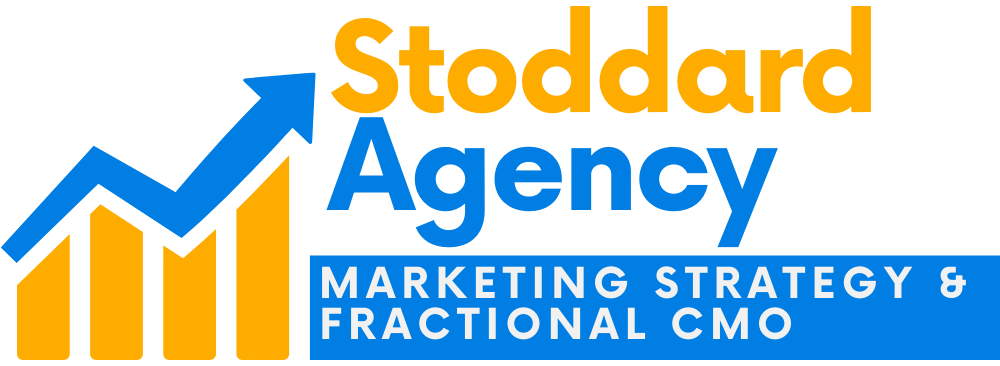A lead generation campaign is one of the best marketing strategies to grow your small business. You can get leads from lead generation companies but most of the time these leads are ancient and useless; increasing your costs in the long run. Alternatively, you can create your campaign and generate leads independently. Using site visitor matching and in-market targeting strategy for your lead generation campaigns will give you a better result and lower customer acquisition costs.

Today I’m going to be talking about how to get a better result from your lead generation, how to get more leads and better leads by starting with a better source of leads, a better list, and better data. Before I dive into it though, please go to GetLeadsFirst.com. If you want to see a cool video that explains exactly how we get leads, where they come from, what our system and processes are. Also, there’s a cool offer there at the end especially for real estate agents and brokers if you want that to be done for you. There’s nothing to opt-in for, no email, nothing to buy at that point, just free information; you can take it and use it for yourself.
So let’s talk about what we’re talking about today. It occurred to me today, I was working with a new client and got a phone call. “Hey, I’m not quite sure how to use the CRM tool yet,” but I got on the phone with a lead, and I was amazed that the gal picked up the phone.” I was thinking, why were you amazed that the gal picked up the phone? I was like, why are you surprised that this gal picked up the phone? All of his lead sources up till now, have been miserable. In other words, he will make calls. Nobody’s ever there. No one ever responds when they do respond to act as if they don’t know what’s going on. Like they entered their name and some sweepstakes a year ago, and they’d berate him. That’s sad. Gosh, I would hate that. I would hate, hate to have to make those kinds of phone calls.
So it occurred to me, that’s because we do it differently and they’re several of my other clients were like, they’re amazing. They’re like, why are, why is this so different? At first, I don’t know how to answer that. I realize, well, it’s because we have a different process. Well, how different could it be? Well, I realized the number one difference is starting with the right list, the right source. So if you’re going to run ads, whether they be Google or Facebook or any other platform, and you have spent all this money and time perfecting these advertisements to try to get people into your sales and marketing and sales funnel, or to recognize your brand, why on earth would you put all that time and energy if you don’t have a good source or a list to put that ad in front of, to begin with?
Now there are several ways to have a better list:
1.) If you’re already doing this on Google and Facebook, you’re probably already familiar with retargeting or remarketing. Now, if you’re not, basically it’s the idea that they take a pixel, which is a piece of code, put it on your website or your landing pages from ads and when someone visits that the pixel fires places a cookie on the web browser and also lets that platform know, “hey, this person, who’s on Facebook right now has been to the website.” So we know that their website visitors so we can show different ads to them or the same advertisements over again, retargeting and re-marketing, the idea is that you put marketing in front of someone and whoever sees that marketing then gets more marketing. That’s all it is. They might make it sound more complicated, but it isn’t.
2.) There are ways to segment. You can have them. You could say that in Facebook for example, if they’ve watched a certain percentage of a video, then they’re going to see your next video. An example of this would be you sending out general marketing or branding and someone watches, 50% of one of your videos. If they see that video that’s just general, then you’re going to send them another video that’s more of a sales presentation or a request for a consultation or an offer of some kind, but they’re not going to see your offer or your pitch unless they see the general stuff first, that’s old hat. If you didn’t know about that, we could do that for you. If you want leads and especially if you’re a real estate agent or broker right now, go to GetLeadsFirst.com and I’ve got a cool free video there that explains that. You can also go to StoddardAgency if you’re not in the real estate business. Both links go to the same place right now, or you can look around at the different things that we offer.
Now, so one thing is retargeting or re-marketing, but how do you even get the people to show the attitude, to begin with? Now, this is where it gets a little tricky because all of the Facebook management folks and Google ad words management folks are going to try to tell you that they can do a bunch of targeting. It’s true, but it’s not what it used to be. There was a time before Facebook ended up all over the news that you could get a lot of demographic data and you could say, only show this ad to people that have this income. However, by the way, many us marketers have tested that, and it often didn’t work even when they offered it and now they don’t even offer it, or they don’t tell you, and they make it obscure, and it’s complicated.
You’re basically at the mercy of these powerful buyers or providers and the powerful seller or provider, which is Facebook and Google. They’re not going to tell you who the people are. It’s all behind their walled garden. It’s all very secretive. They don’t exactly tell you how it works. They decline your ad when they don’t like it. Then they try to give it, you say, point you to the privacy policy or the other policy or the terms of use or this or that and tried to say, well, you should have read it and you read it, and you still can’t figure it out because it’s changing every day. So, that’s just the way it is. So, but that is a form of targeting, and they do have some necessary information where you can, demographic and scale it down or can you can market to people who like individual pages, maybe an audience that you think is cool.
3.) Another thing you can do is geo-targeting where you can limit, by the reasonably good location. They still have that. We use that regularly for real estate agents, by the way, to pick neighborhoods and cities.
So, but what if you want to do better than that? What if you’re going to know who the people are or what if you’re going to be able to use that in multiple platforms or online and offline marketing. What if you want to know and be able to identify by name, who the people are and have that information to use in other platforms or another direct mail or something else. Well, you can’t do that. You can only use that pixel that re-targeting data in that platform that gave it to you. So Facebook’s for Facebook, Google’s for Google and Linkedin even has a little bit of their own that they’re starting to get better at. So you would have to have a way to identify these people.
4.) Now we have a service for that, actually called a site visitor and also our in-market targeting data does that as well. We have a site visitor or anybody that goes to your website, we can identify them, and all those anonymous visitors. Then you can use that data in your marketing, on any platform. If you’re interested in that, go to StoddardAgency.com. So, there’s that.
Now, what if you want to know who’s a potentially a good fit before you even send any ad whatsoever? Like anything well, then you need data. Now, where do you find that? Well, this is where – I hope you can see on reverse engineering and going back to the beginning here of the source of people, the list, who are we going to even advertise to. That matters. Otherwise, you’re wasting money on; you can’t afford, if you’re a small business, to advertise to everybody like Superbowl ads. You want to get the maximum impact at the lowest cost. Well, how do you do that? You have to target the needles in the haystack instead of advertising to the haystack. It would help if you advertised to the needles. Now we’re getting down there where I’m reverse engineering.
Well, you have to have a source of that data. Now we have, that’s called in market targeting. Now we have a license. I’m not afraid to say that I’m a licensee, I’m not the owner of that company, but we have an exclusive license with a company that proprietary technology and gathers the data and gathers lists, spends much money doing that. We spend money to keep our license in good standing as well. Also, we then take that, and we can apply all of that data to our advertising. It’s very cool stuff.
So what is this data? What’s in market targeting? We’re not the only source of data. There are other places where you could get lists of people to market to that are appropriate for your market, for your business, that is in the market for what you sell. You can do a Google search online for a list. I used to use a variety of websites to buy lists of people that are fitting a specific need or demographic in the old days is a costly and very expensive for the list and very expensive to advertise because you’d have to use direct mail. You get an address and a name; you’d have to send a mail, wait for the results, see if it worked several weeks. So then it’s expensive. Nowadays it’s super trick cheap. It’s an amazing time we live in.
However, that data, a lot of that ancient sources are old or, or not as appropriate. It doesn’t contain what you need, which is an email address so you can market to them online. So now there are companies like type in, behavioral targeting, behavioral data into Google and see what pops up. You’re going to see much stuff, but there’s much misinformation, and there are very few companies that make sure that this is useful data and then make sure that it’s very, very recent. It needs to be relevant.
If somebody is searching for let’s say, a new home and thinking of listing and they start searching, does it matter that they did that six months ago or is it more relevant if they’re doing it now within the last 30 days? Because now they’re in that mode of searching and they’re thinking about it. You want to market during that time there, and it could be looking for a dentist. They could be looking for a personal trainer. They could be looking for a chiropractor. When they’re actually in that mode of searching, that awareness phase, that is when they’re the highest likelihood of being a right customer.
Therefore, this is your shortest path to profit. This is your surest path to profit. This is now becoming relevant for you. So you want to show your ads to those people. So in market targeting is the idea of getting the data. We put pixels, behind many payment gateways, meaning they’re not bots, they’re people that buy things and register with emails, multiple emails. We gathered that all on what’s called an identity graph. Now, this is very important; a lot of these data companies don’t go into detail. I’m going to go very briefly into the basics and identity graph is like this big list. It’s like a spreadsheet maybe. What it is is it’s collecting all of that information permanently on that person that’s searching the internet. Now they have a cookie on their browser, and they can go, and they also have a specific device they’re using, and when they go and visit one of the publishers’ websites that we have our pixel on, it fires, checks to see if the cookie’s already there. If it’s not a place, is it? If it is, it goes, oh, this person’s coming back. Let’s see what device are they on and what email are they watching now or using now? So then we would add that to the graph, pretty soon the graph has filled out with all of this great information. The average person uses two and a half emails online and has three to four devices. So we are collecting all that and then looking at that behavioral data. It’s legal, totally above board, totally ethical. People are saying that they’re okay with this when they go on these websites.
Now you have to be careful about how you use that website. We use it with responsibility. We don’t have this information exposed on my computer. It’s all encrypted and what’s called a hash a shot to 56, which is the industry standard. It’s encrypted; it’s safe, it’s not getting into the wrong hands. Then we use that responsibly. We can upload that to Facebook. So we get all this behavioral data. We see that someone is in the market for buying or selling a house. When we see that, and they will be, how do we know that we’ll they’re visiting specific URLs or doing certain keyword searches, and they’re also consuming content, doing social media behaviors. We see all that. Well, this person who happens to be in your area, Mr. Realtor, it looks like they’re starting to look like they’re really in the market to sell and they’re doing all kinds of searches. We could see that.
So then we take that data, and we put that in, and we use that data to choose whom we’re going to advertise. Then you can pick any medium because I’m not stuck with Facebook or Google or anybody. It’s not behind their walled garden. We have the data; it’s the first party data. Here’s the key, not second, third, fourth party data, which is what most of you guys are used to using and don’t even know it. This is the first party data. It’s our me and my client’s data that we have, and if they’re using our site visitor, we know who’s on their website, which means they’re an even higher likelihood of being a good prospect. That’s the best you can get is someone who’s thinking about you in particular. The shortest path to profit. We take that, and then we advertise, put our ads in front of them. Here’s what’s cool about that. The ads are going to be more relevant because we’re showing ads to people that are in the market.
They’re already saying they’re in the market. So, therefore, the more relevant, what is Google and Facebook, their relevancy engines, which means that they like it when people consume the content and engaging the content and they show it more often, sometimes for free. So if you’re a business owner, you want your ad showing more often for free, right? Because of your ad to the right people who are more likely to engage, that drives your cost per advertising down your cost per click down, which drives down your cost per acquisition. Pretty soon it’s cheaper and faster and easier for you to acquire the customer. Now, if you can afford to advertise more, you can beat your competition. Here’s the key. You need to be able to afford to pay more for a client.
So let’s say your competitor can afford to pay $25 for a lead for a client, for a closed client. They can’t pay more than that because they can’t make it work. However, if you can spend more, you can beat them all day long, you can advertise more often more frequently and take their business well, how would you be able to afford more than them? Well, you could afford more than them that if you have a greater transaction, you have more a long tail an ascension ladder, different ways, upsells, things that you can sell that are more than just your competitors sells. You have more products and services. Or if you can monetize that lead more. Another way to do that as is having a higher close rate. If you know you’re going to close higher because you have a better follow up system or the leads are better, to begin with, then you can afford to pay a little bit more.
If you’re targeting better and you can follow up better, and you could have a higher profit per customer. These are all factors that play a part. We get into that in more than other videos. By the way, if you’re still watching this or listening to this in the podcast and you want to know how do I do this, how am I getting these leads for my clients? Then go to getleadsfirst.com. Don’t do the https. I don’t know if I got that set up correctly yet or go to StoddardAgency.com. However, if you go to getleadsfirst.com, the key is you need to get leads first before your sales process will do any good, and you need to get leads first before your competitors because the first to the lead is the most significant advantage.
So that is that you start with the list. The list is key. Another way of saying it is the data. When I say data and list, it means the same thing because I’m talking about behavioral data which relates to real human beings, what they’re doing. There’s a difference between demographics and behaviors. Demographics are fine. That’s one way to kind of figure out, guessing work whom you might want to advertise to, but it’s doesn’t even hold a candle to behavior. The behavior is when someone says, “Oh, I’m looking for what you sell.” If they’re looking for what you sell, that’s way better than other 35 to 45 male who lives in this neighborhood or whatever, and it makes this income. Who cares compared to they’re looking for what you have, so they’re looking to list or to buy a home.
That’s whom you want to advertise to. How do you get that behavioral data, behavioral marketing, in-marketing, behavioral data? That data is the key to the whole thing because that’s how we generate a list that superior — one last word on that. You take the data, and you can online or offline do whatever you want, but you can upload it to Facebook, to a custom audience. Once you have a custom audience based on that data, it’s a better starting point. Otherwise, you’re letting Facebook and that’s what we’re paying Facebook and Google to do is not the just the advertising on their platform, on their media. It’s the premium you pay is for their targeting. That’s what we’re paying for. Also, that’s the secret sauce that they hold real tight. Well, what if you say, I don’t need that. I got my list, and you advertise to it.
You just cut your costs. Now you could use their targeting, but here’s how you start with a better list. Rather than paying for them to, you know, guess and try to figure it out and then find people and later try to find more people like that. You start with the people that they like that or that you know that you want and you give those, and then you use their behavioral targeting on top of that. So their artificial intelligence, their algorithms working on top of that saying, oh, let’s find a look-alike matches customer look like matches off of this list.
This awesome to begin with. Behavioral targeting in-market. People that are in-market for what you sell list. Very cool stuff. I hope you got something of this. Start with a better list. You can do your search for behavioral in-market data. You could buy data, and you could start with a list and old school list to from one of the big data companies, US data. There’s a whole bunch of them. I can’t even remember the name off the top of my head. If you search, you’re going to see all kinds of stuff on this like how to buy a list, buying a list for my business. I mean you could research this for days but if you want to shortcut the whole system and get superior results and then go to getleadsfirst.com and we’ll be happy to show you a free video there to explain it exactly how you do it, nothing to even do or opt-in for. We’d be happy to help you if you choose at the end of it. All right, guys, have a terrific day. We’ll talk to you soon. Take care.





